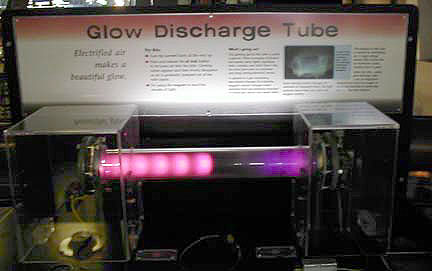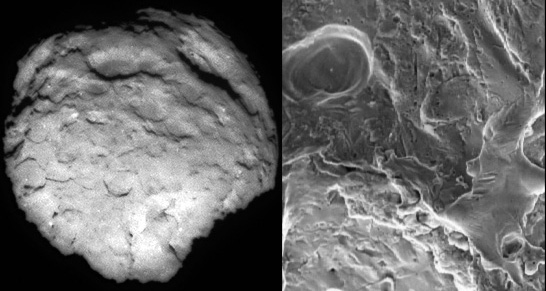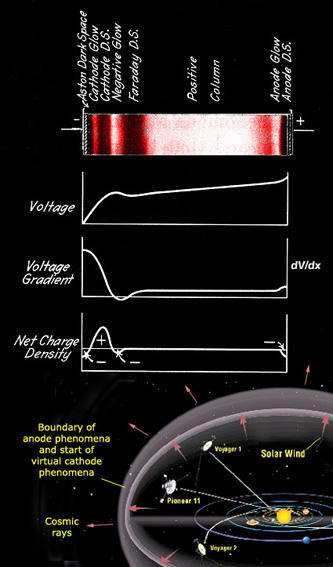holoscience.com | The ELECTRIC UNIVERSE®
A sound cosmology for the 21st century

Comets Impact Cosmology
“Comets are important, they could be the key to the universe …maybe.”
– Burt Lancaster, in the movie Local Hero.

From Nature, 5, 174, December 28, 1871:
“Encke’s Comet and the Supposed Resisting Medium,” by Professor W. Stanley Jevons.
“The observed regular diminution of period of Encke’s comet is still, I believe, an unexplained phenomenon for which it is necessary to invent a special hypothesis, a Deus ex machina, in the shape of an imaginary resisting medium.
…It is asserted by Mr. R. A. Proctor, Prof. Osborne Reynolds, and possibly others, that comets owe many of their peculiar phenomena to electric action.
… I merely point out that if the approach of a comet to the sun causes the development of electricity arising from the comet’s motion, a certain resistance is at once accounted for.”
From Scientific American, July 27, 1872:
“Professor Zöllner, of Leipsic, in a lately published work on the nature of comets, makes it his purpose to explain the remarkable phenomena they present by an application of the established principles of physical science alone.
…The self-luminosity of comets he sets down to electrical excitement…
…the nuclei of comets, as masses, are subject to gravitation, while the vapors developed from them, which consist of very small particles, yield to the action of the free electricity of the sun.
…It is therefore sufficient to attribute to the sun an electrical energy no greater than that supposed to account satisfactorily for the appearances presented by cometic trains…”
From English Mechanic & World of Science, 11 Aug 1882, pp. 516-7:
COMET’S TAILS”…There seems to be a rapidly growing feeling amongst physicists that both the self-light of comets and the phenomena of their tails belong to the order of electrical phenomena.”
From Nature, No. 1370, Vol. 53, Jan 30, 1896, p. 306:
Theory of Comet’s Tails “It has long been imagined that the phenomenon of comet’s tails are in some way due to a solar electrical repulsion, and additional light is thrown on this subject by recent physical researches.
… Prof. Fessenden suggests that negatively charged particles are emitted from that side of a comet which is turned towards the sun…” (Astrophysical Journal, vol. iii. No. 1)
Science at the end of the 19th century was closer to the truth about comets than we are now!
Astronomy throughout the ages has been dogged by beliefs about the universe that have dictated how facts are to be interpreted. Modern astronomy is crippled by the belief that although there is electricity in space, it doesn’t do anything.
At the end of the nineteenth century there was considerable interest in electricity and the phenomena of electric discharges in evacuated glass tubes.

Scientists of the day could see the many parallels between the behavior of the luminous comet and a laboratory glow discharge. But in the following decades they abandoned that vision. Electrified comets required an electrified Sun. Astronomers in the 20th century were never taught the physics of gas discharges, and the idea of electricity in space was anathema to them. They turned their eyes away from the signs of electrical activity and adapted the older mechanical theories to explain comet behavior as buffetings in a solar “wind.” The gas discharge model was passed over for Fred Whipple”s ‘dirty ice ball’ model of comets.
In January this year I wrote about the initial reports coming from the closest flyby ever of a comet nucleus, that of Comet Wild 2. Recently, the first scientific reports of that encounter were published. As anticipated, Comet Wild 2 provided more puzzling questions for astronomers while adding confirmation to the ELECTRIC UNIVERSE® model.
On 18 June, Nature magazine printed a special section: ‘Stardust at Comet Wild 2.’
Anny-Chantal Levasseur-Regourd writes in ‘Cometary Dust Unveiled’ (p. 1762):
“Cometary nuclei are unique objects that have preserved the primitive matter out of which the solar system was born. They are conglomerates of ice and dust….”
Although these statements are presented as fact, they are opinion … opinion that Comet Wild 2 defies. In fact, all of the recent discoveries about comets contradict the “gravity-dominated” consensus.
Harold Weaver, writes in Not a Rubble Pile? (p. 1760):
“New in situ observations of a comet are demonstrating once again how little we understand about these dark and mysterious planetesimals. Just when a consensus was being reached that cometary nuclei are gravity-dominated ‘rubble piles,’ stunning images of the nucleus of Comet Wild 2 …are challenging that paradigm.”
Weaver refers to a new textbook, Comets II, from the U. of Arizona press. The continued use of textbooks that uncritically peddle the old consensus, when there is so much opposing evidence available, is a condemnation of science education.
“Astronomers as a class they hug caution and are as fearful of having their dogmas upset as a witch-doctor his magic.”
– Comyns Beaumont, The Mysterious Comet, 1932.
Again in the June 18th issue of Nature, Weaver asks:
“why was the surface so littered with features if sublimation was peeling off layers every time the nucleus passed through the inner solar system where its ices were heated by the Sun? …the implication is that the nucleus of Wild 2 has substantial strength and that gravity plays little role in the shaping of the features, which is contrary to the conventional wisdom that cometary nuclei are gravity-dominated rubble piles.”
As usual, the pits and craters are ascribed to impacts, with no evidence whatsoever.
Weaver goes on:
“The rubble pile proponents can still point to the tidal disruption of comet Shoemaker-Levy 9 during its close approach to Jupiter in 1993, and to the frequent and apparently spontaneous disruptions of many other cometary nuclei…”
That comets can be tidally disrupted is pure supposition. It is the most ineffectual model imaginable and fails to explain the suddenness and violence of the observed disruptions, or the fact that some occur far from the Sun. I wrote in January:
“Powerful internal stresses caused by redistribution of charge within an actively discharging comet are responsible for their observed tendency to fragment. The effect is like an exploding condenser. It is not due to the comet being a weakly coherent rubble pile.”
Comet Wild 2 conforms to the electric model of comets, which sees them as complex planetary fragments instead of pristine primordial matter.
Referring to the three comets that have had their nucleus imaged by spacecraft, Halley, Borrelly and Wild 2, Weaver writes:
“The surfaces of all three nuclei appear to be mantled with non-volatile material, and the infamous activity of comets seems to be confined to very localized portions of the surface, or possibly, even subsurface geysers.”
The only reason for suggesting the comets are ‘mantled with non-volatile material’ is that the dirty ice ball model demands it. They are ‘the darkest objects in the solar system’ so, ipso facto, the bright ices must be hidden inside. Comet Wild 2 is supposed to have been diverted into its current orbit by Jupiter only 30 years ago so it is surprising that it seems to be as dark as comet Halley, which is thought to have passed through the inner solar system hundreds or thousands of times.
The dark mantle hypothesis is symptomatic of pathological science, where ad hoc adjustments are made to save a theory and the adjustments are not testable. The observation that comet Borrelly was ‘dry and hot’ can be regarded as evidence that comets do not have a mantle. Comet surface features and composition are indicative of their bulk composition. Electrical arcs burning the surface may explain their remarkable darkness. A similar effect can be seen on Io, where wandering cathode arcs similarly cause dark depressions, Io’s so-called ‘volcanic calderas’.
Weaver goes on:
“Detailed geometrical analyses of the jets have been used to identify the sources of activity on the nucleus, which is one of the outstanding unresolved issues in cometary science. Surprisingly, the largest depressions on the surface of Wild 2 are apparently devoid of activity. …most of the jets apparently originate near the latitude of the subsolar point and nine of the jets appear to rise from two depressed regions on the surface.”
These are not surprises in the electrical model. Cathode arcs tend to strike from high points or sharp edges, in preference to flat surfaces. They will tend to strike where the electric field is strongest, at the subsolar point. The depressions are caused by steep arc erosion of the crater edges. One of the research articles (p. 1764) states:
“The flat floors [of the depressions, bounded by nearly vertical cliffs] seem to be inert at the present time and resistant to sublimation because none of them are detectably associated with observed jets.”
Later, (p. 1766) we find:
“…it is not clear why sublimation processes, driven by solar illumination on a spinning body, would form globally distributed circular structures.”
There is only one process that will do that – electric arc machining!
The electrical model is more precise about where to look for the source of the observed jets. In January, I wrote:
“In the electric theory, unresolved bright spots are to be expected where the cathode arcs impinge on the nucleus and give rise to the cathode jets”
What do we find? On page 1768:
“The most significant albedo, or at least brightness, features are rare small bright spots that occur in multiple images at different phase angles …ruling out the possibility that it is a phase effect or image artifact. In stereoimages, it [a <50-m bright spot at the edge of a flat-floored depression] has no height. There is an adjacent shadow-like dark spot that could be the shadow of an optically thick jet… The bright spots are small and rare, suggesting that they may be short-lived.”
Some of the jet sources are reported as tending “to coincide with the locations that are brighter than average.”

The spacecraft:
“…encountered regions of intense swarms of particles, together with bursts of activity corresponding to clouds of particles only a few hundreds of meters across. This fine scale structure can be explained by particle fragmentation.” (p. 1776).
Here we see another ad hoc explanation for a discovery that surprised the investigators. In the electric model, cathode jets carry electric current. The current generates a magnetic field that ‘pinches’ the jet and maintains its constriction over great distances. In January I wrote:
“Because they constitute an electric current, the [cathode] jet streams will remain separate and coherent over vast distances. Comet Hyakutake’s tail was detected by the Ulysses spacecraft half a billion kilometres away! Cometary filaments cannot be explained by outgassing. They are definitive evidence for the electrical nature of comets and the solar environment. The trajectory, velocity and filamentary nature of the comet’s ion tail conform to that known experimentally as a ‘plasma gun’.”
In short, we should expect the dust detection to occur in bursts with nothing in between the bursts. On page 1778, it is reported that:
“The swarms consist of short bursts of impacts, a fraction of a second in duration. Some bursts are seen as single events of duration less than or equal to 0.1 s, surrounded by a relatively silent period lasting up to several seconds. Structure on such a short time scale (i.e., small physical scale in the coma) was unexpected and offers insight into the physical mechanisms at work in the coma.”
It certainly does, provided you choose the right model. Unfortunately, astronomers choose a mechanical ‘three-dimensional fluid-dynamical coma model.’ This brings to mind the comment by an astronomer who has suffered for demonstrating the big bang theory is based on false assumptions:
“If you take a highly intelligent person and give them the best possible, elite education, then you will most likely wind up with an academic who is completely impervious to reality.”
The above-mentioned model fixes it so that the troublesome jets are not jets at all. They are:
“shocks resulting from nonradial gas flow and depend critically on the nucleus shape and topography (but do not require discrete active regions). This implies that the dust particles in the inner coma are also concentrated along the gas flow discontinuities, creating the visual impression of jets even though the dust may originate from different areas on the nucleus.”
The ingenuity of such nonsense is breathtaking. So how does one account for the short intense bursts of impacts with such a model? The paper continues airily:
“All can be explained by grain fragmentation. The very high level, but short duration, bursts are the result of the spacecraft passing through a compact cloud of fragmentation products.”
Nowhere are we told what might cause the mysterious delayed fragmentation, hundreds of kilometres from the comet nucleus. There is no visual evidence for it. It is another ad hoc notion to pile on top of all the others.
I repeat my opening question: How many failures of the ‘dirty ice ball’ theory does it take before it is falsified?
The Electric Comet and its Impact on Cosmology
Comets are important, they are the key to the universe!
If comets are essentially an electrical phenomenon then the implications for cosmology are profound. It means that everything we believe about the Sun, and therefore all stars, is wrong. Rather than assuming the universe is electrically dead, it raises the possibility that Nature is at least as smart as we are and finds electrical energy extremely useful in creating and energizing the structures we see in space. Already the plasma cosmology section of the IEEE has published many papers on the natural formation of spiral galaxies by the interaction of intergalactic plasma current filaments, or ‘Birkeland currents.’ It does not require invisible matter or mysterious forces to produce the spiral patterns. Yet astronomers ignore the subject. Plasma cosmology has a beautiful symmetry with our everyday experience of electric power. Just as we light our cities with electric power generated hundreds or thousands of miles distant, so galaxies are lit by cosmic transmission lines that seem to extend beyond the visible universe.
Positive ions (protons) are accelerated from the Sun, which indicates that the Sun is positively charged. Yet the solar wind is electrically neutral (within the limits of our measurements, it contains equal numbers of positive ions and electrons), so how can a comet exhibit electrical effects?
The answer, as always, is to go back to the proposed model to see how it fits with the data, or to see if the experiments performed so far can actually answer the question. In classic ‘Back to the Future’ style, Ralph Juergens proposed in the 1970’s that the Sun was the anode focus of a glow, or corona discharge. It simply requires the Sun to be a body positively charged relative to its galactic environment. Welcome back to the nineteenth century!
Juergens wrote:
“Transmission lines carrying high-voltage direct current – electric trolley wires, for example – discharge almost continuously to the surrounding air. In the case of a positive (anode) wire electrons ever present in the Earth’s atmosphere drift toward the wire, attracted by its positive charge. As they penetrate the increasingly intense electric field close to the wire, the electrons gain energy from the field and are accelerated to energies great enough to initiate electron avalanches as they collide with and ionize air molecules. The avalanching electrons, in turn, intensify the ionization immediately surrounding the wire. Positive ions, formed in the process, drift away from the wire in the electric field. In this way, a more or less steady discharge is maintained, although there is no tangible object other than the surrounding air that can be considered a cathode.”
Electric Discharge As The Source Of Solar Radiant Energy, KRONOS Vol 8 No. 1, Fall 1982.
In the second instalment (KRONOS Vol 8 No. 2.), Juergens wrote:
“the postulated discharge – though focused on a central solar anode – would appear to embrace a vast region of space, most of it devoted to cathode mechanisms. The solar corona, and its extension through interplanetary space and beyond, finds an analog in the “negative glow” region of a glow discharge. The chromosphere we shall interpret as the inner limit of this negative glow. Only the photosphere, at the inner limit of the vast discharge cavity, will be assigned an anode function in this model.”

The ‘negative glow’ region can be seen to have a strong electric field. People objected to Juergens’ model because we don’t find relativistic electrons, accelerated by a strong radial field in interplanetary space, rushing toward the Sun. But plasma phenomena in a glow discharge are complex, so appeals to simplistic models based on electrostatics are irrelevant. Instead, I propose that Juergens’ model be modified and that interplanetary space is the extensive ‘positive column’ region of a glow discharge. Cobine writes, “The positive column is a region of almost equal concentrations of positive ions and electrons and is characterized by a very low voltage gradient.” This model, with planets orbiting within the anode discharge of a star, is of extreme importance when considering life on other planets.
The most important feature of the positive column region of a glow discharge is that the plasma is quasi-neutral. That is, sampling will reveal equal numbers of positive ions and electrons. And that is what we find in the solar ‘wind.’ It merely forms the conducting plasma medium between the cathode region at the heliospheric boundary and the anode region near the Sun. So looking for excess relativistic electrons rushing toward the Sun is no more sensible than looking at a current-carrying wire and asking where are all the excess electrons rushing from one end of the wire to the other.
The next most important feature of the positive column region of a spherical glow discharge is that throughout most of its volume the plasma maintains a weak but constant radial electric field. That field is what accelerates protons from the Sun to produce the solar ‘wind’ and it assists the drift of electrons to the Sun. That field also creates a mystery for astrophysicists in their discovery of the small but constant radial deceleration of spacecraft that are moving in the solar plasma. The discovery of that deceleration was a striking confirmation of this glow discharge model of the Sun. See ‘Mystery Solved.’
Having described the solar electrical environment we can go on to answer the question posed earlier: “How can a comet exhibit electrical effects?” A comet’s tail arises from the interaction between the electric charge of the comet and the solar discharge plasma. The comet spends most of its time far from the Sun, where the plasma charge density and voltage with respect to the Sun is low. The comet moves slowly and it easily accumulates enough charge to balance the ambient voltage.
As the comet approaches the Sun, the nucleus moves at a furious speed through regions of increasing charge density and voltage. The comet’s surface charge and internal polarization, developed in deep space, respond to the new environment by forming cathode jets and a visible plasma sheath, or coma. The strong electric field in the comet”s plasma sheath generates x-rays. The cathode discharge hot spots characteristically jump about the nucleus, and the comet may shed and grow new tails. Or the comet may explode like an overstressed capacitor, breaking into separate fragments or simply giving up the ghost and disappearing. The ‘non-gravitational’ forces observed perturbing comet orbits are simply due to these electrical interactions.
None of these phenomena were expected from an inert object. The dirty ice ball model was never tenable and has been discredited. It has profound implications for theories of the origin of the solar system and cosmology.
Wal Thornhill